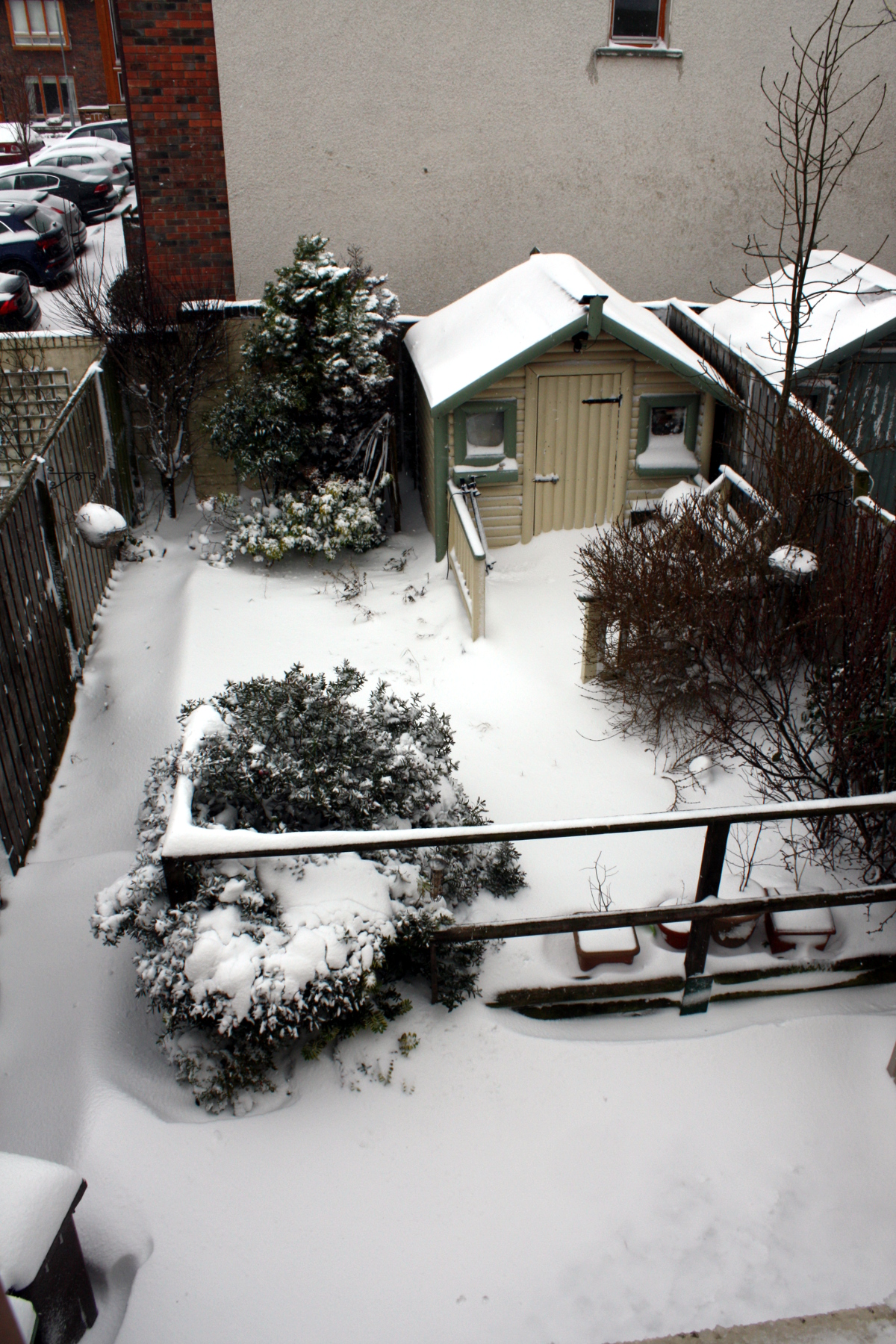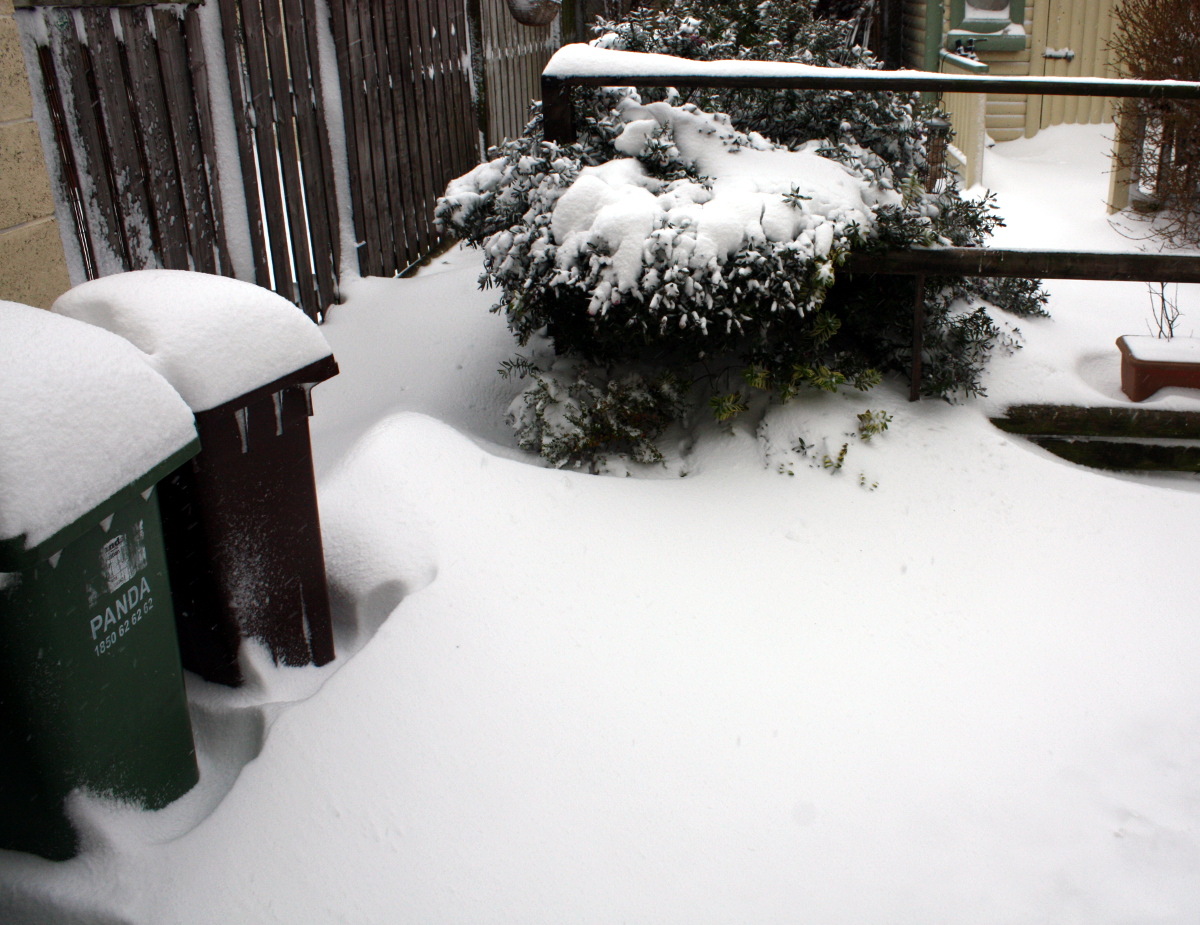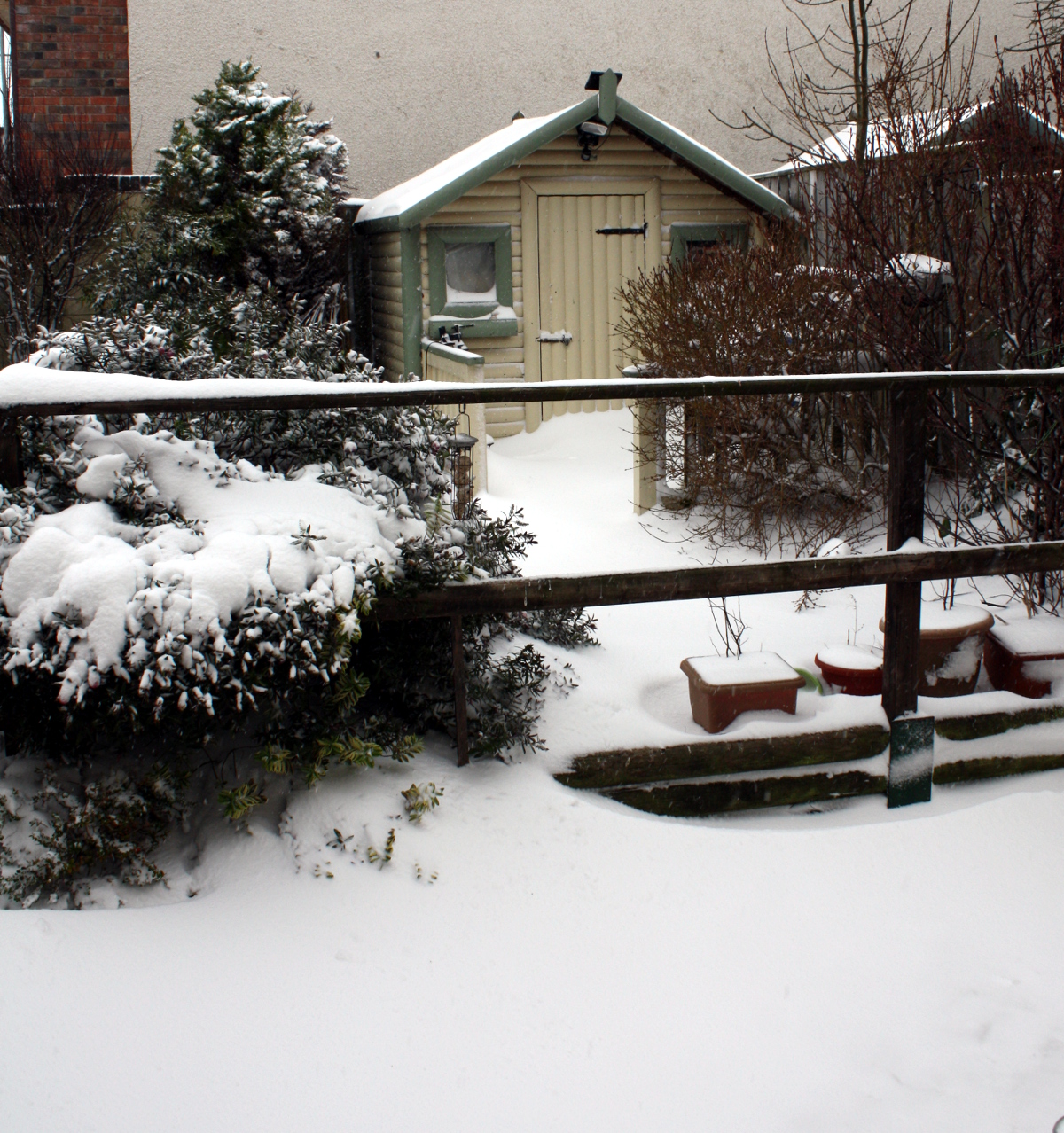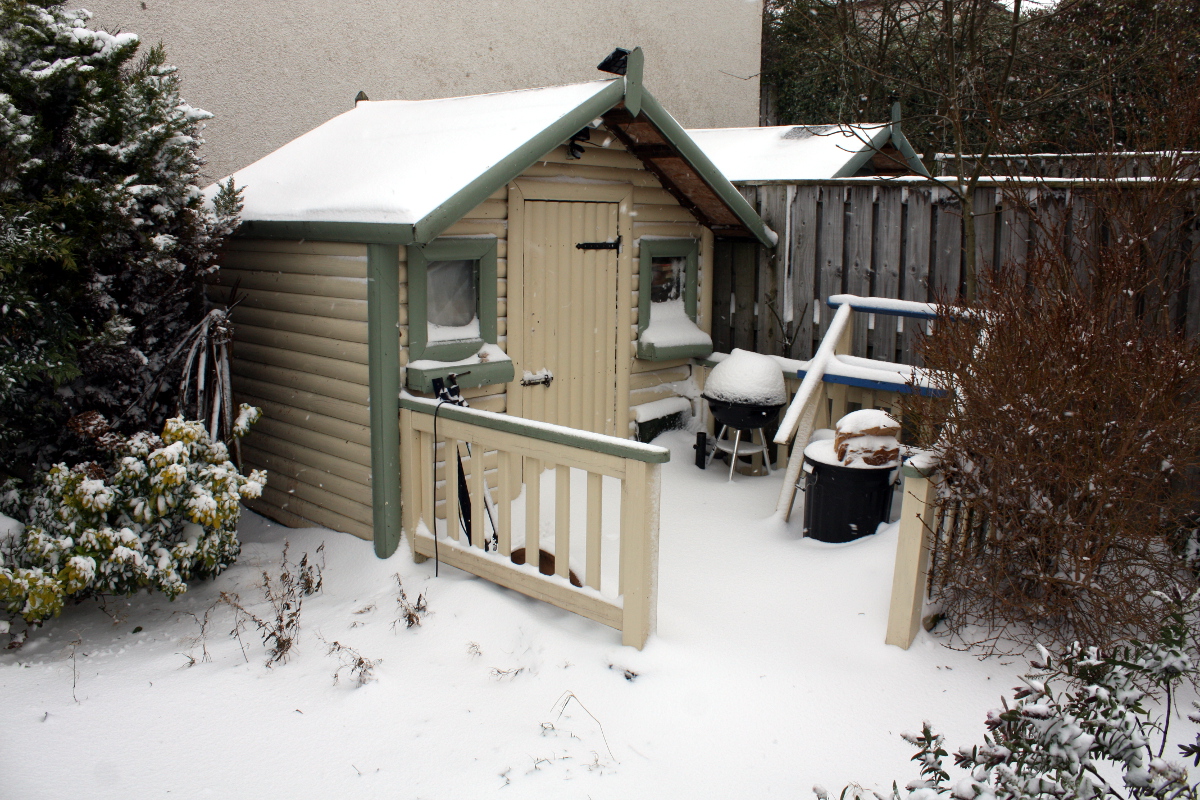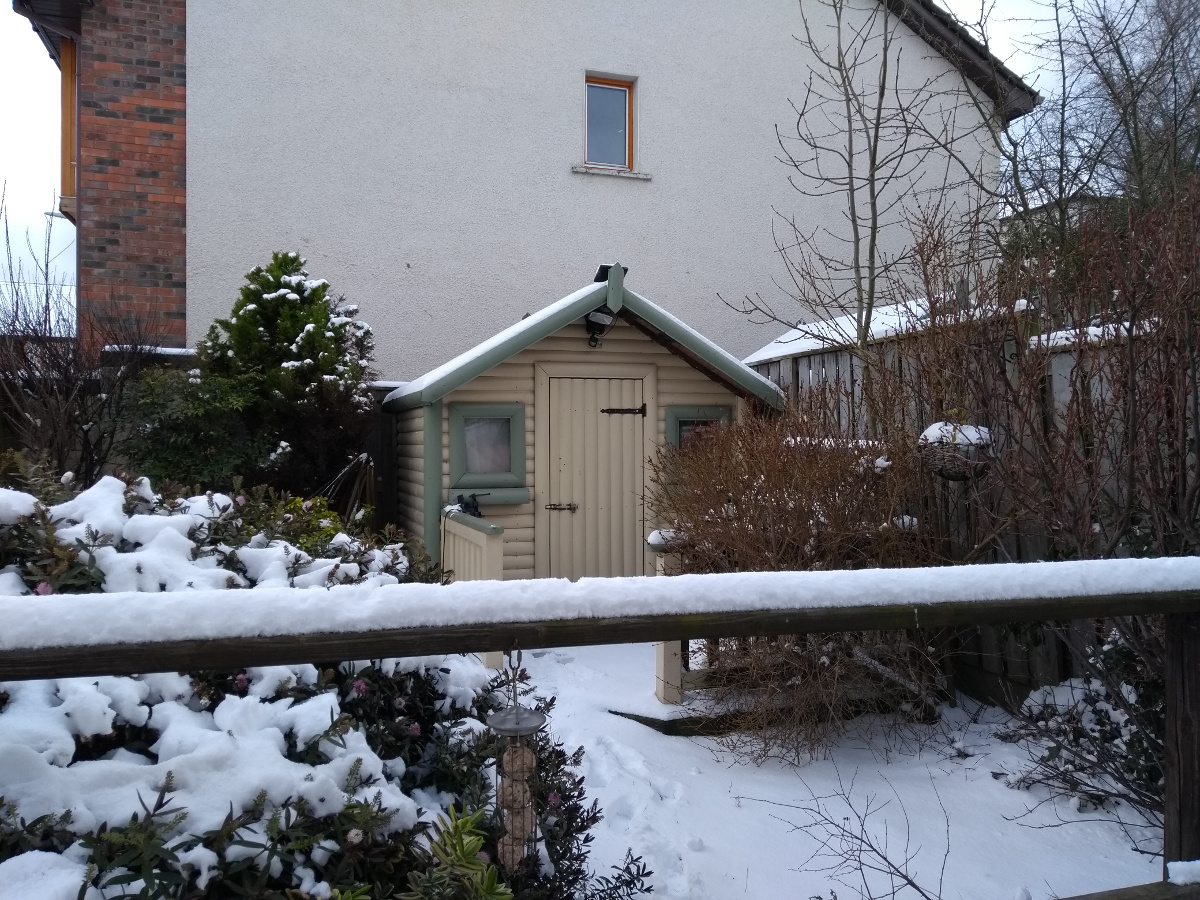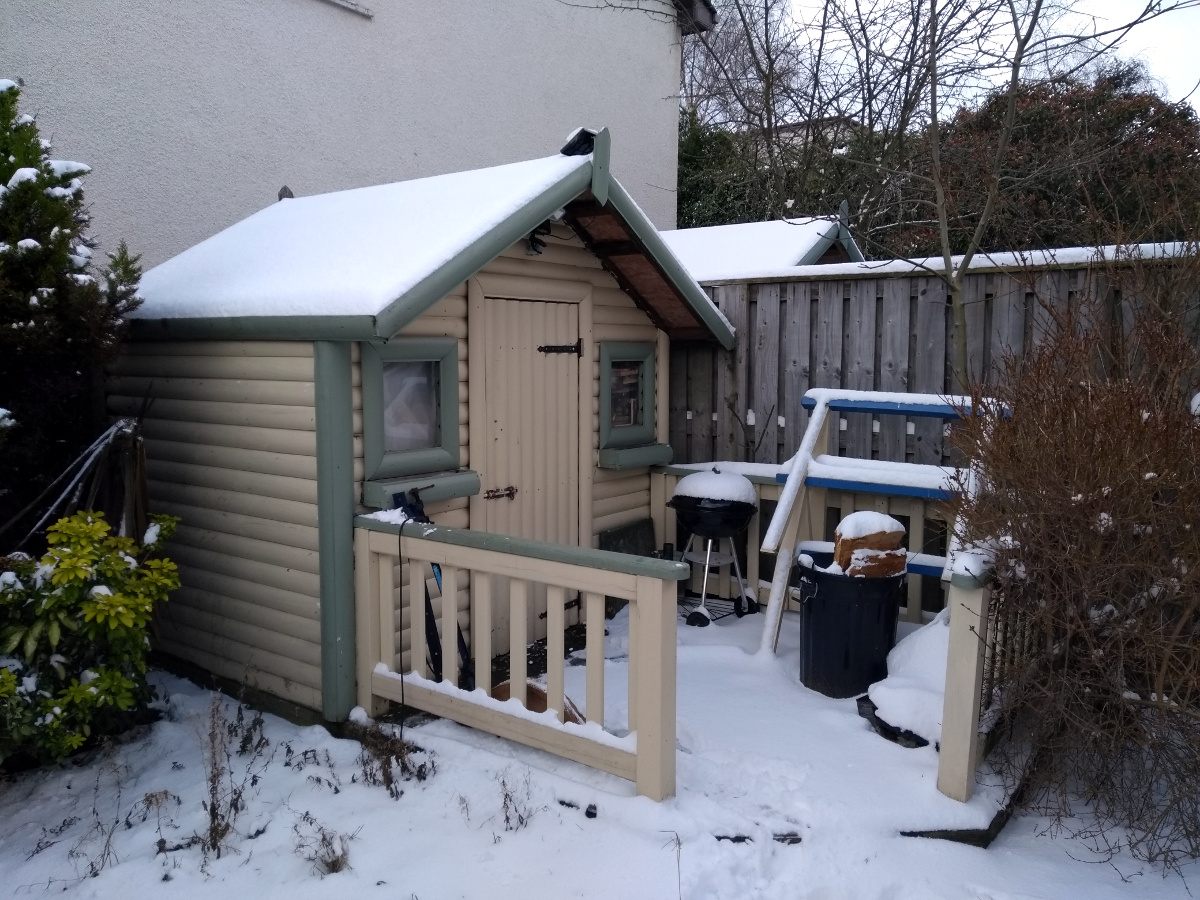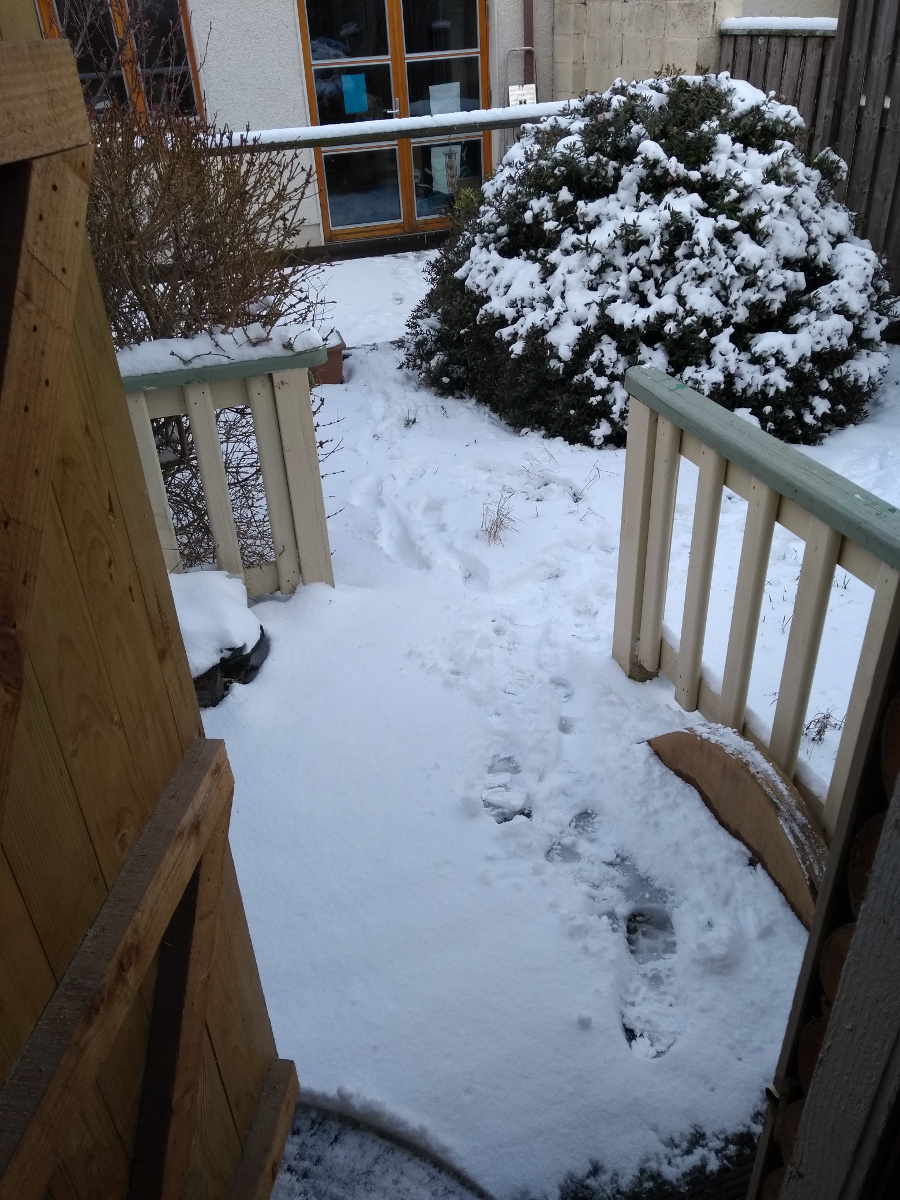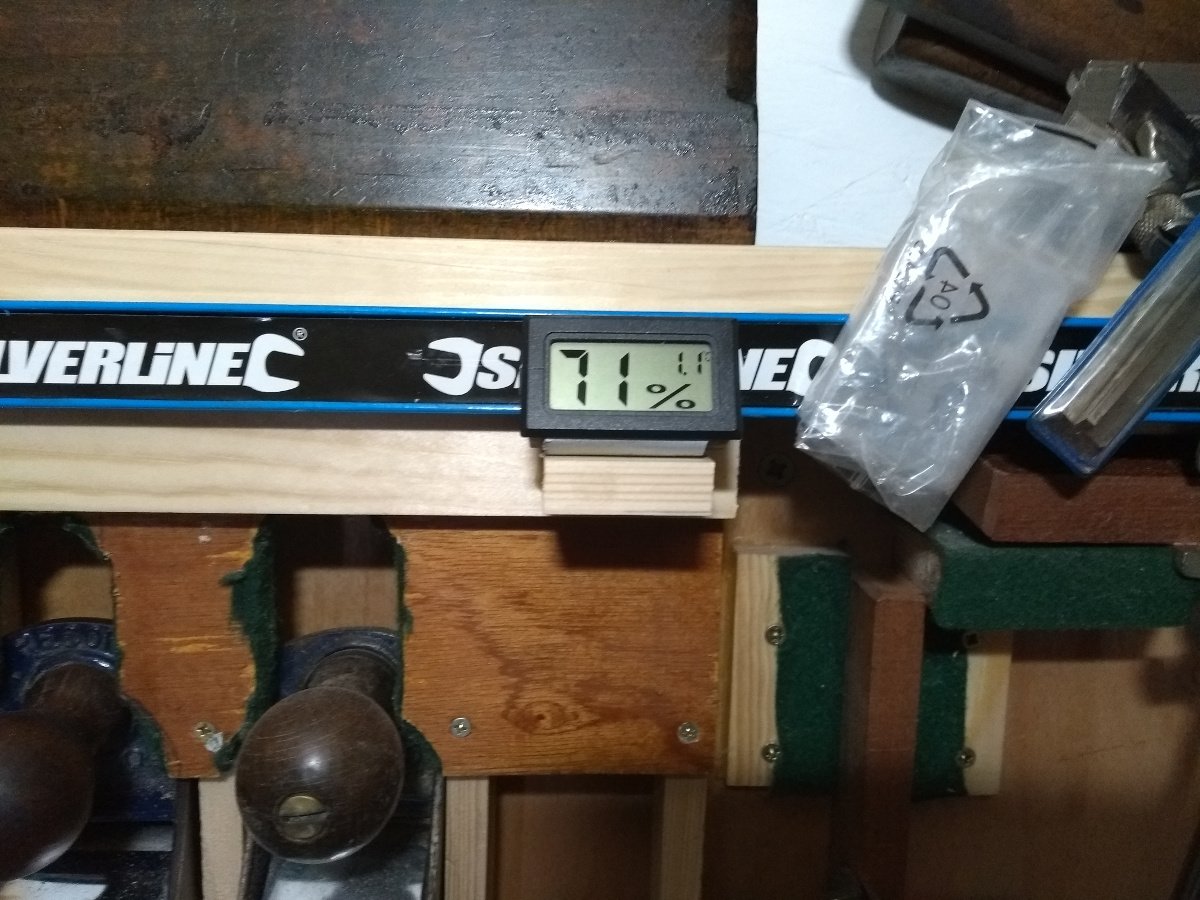Very calm and quiet last night thanks to the snow (and funky lighting too from streetlights reflecting off the snowclouds)
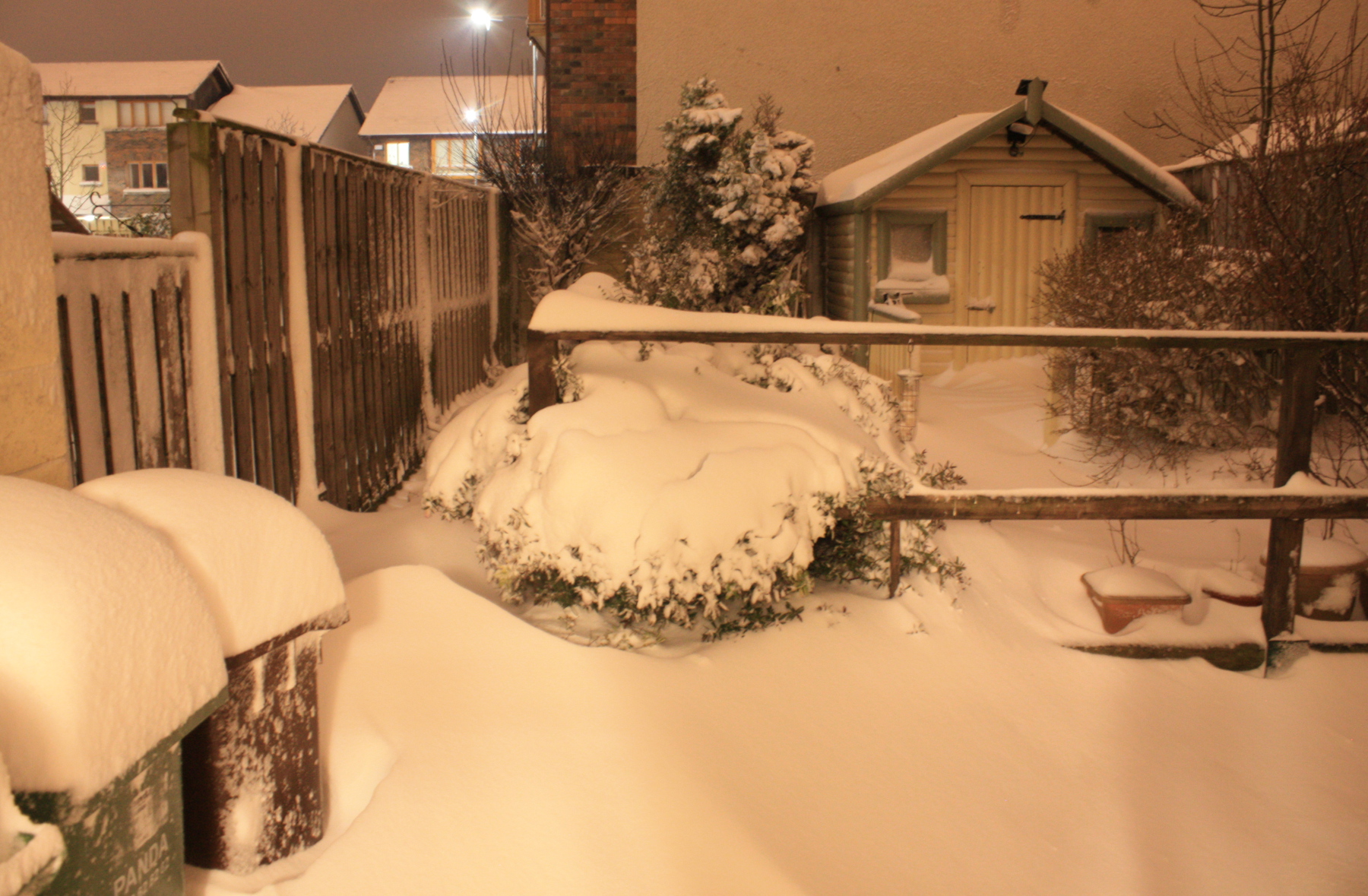
Terribly pretty but that’s all due to thaw and melt in the next day or four and the stuff that’s right up against the shed door will melt and then run down the door, find nowhere to go because of the snow and may wind up flowing over the lip and into the shed (and they didn’t leave a corner uncut when making the shed – they never treated the floorboards for water, so that’d lead to trouble even if it didn’t destroy stuff sitting on the floor in there).
So this morning….
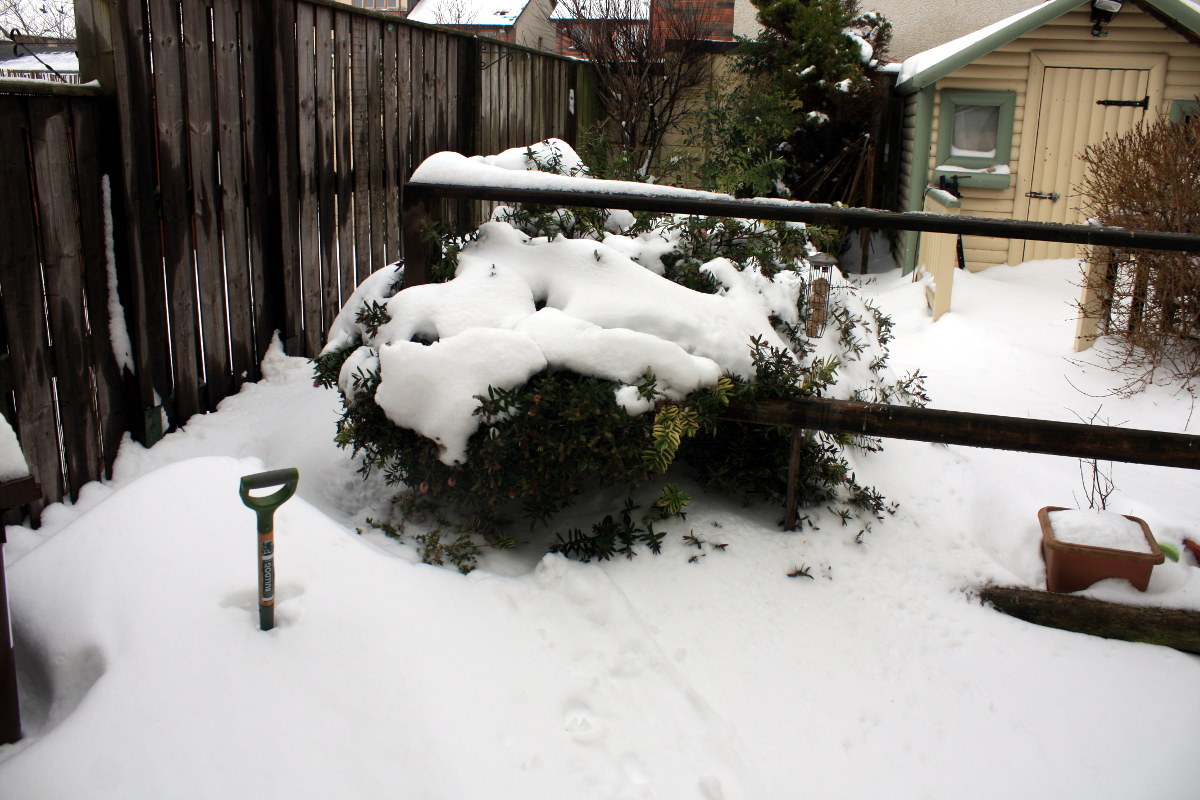
Right. Shouldn’t be too bad…

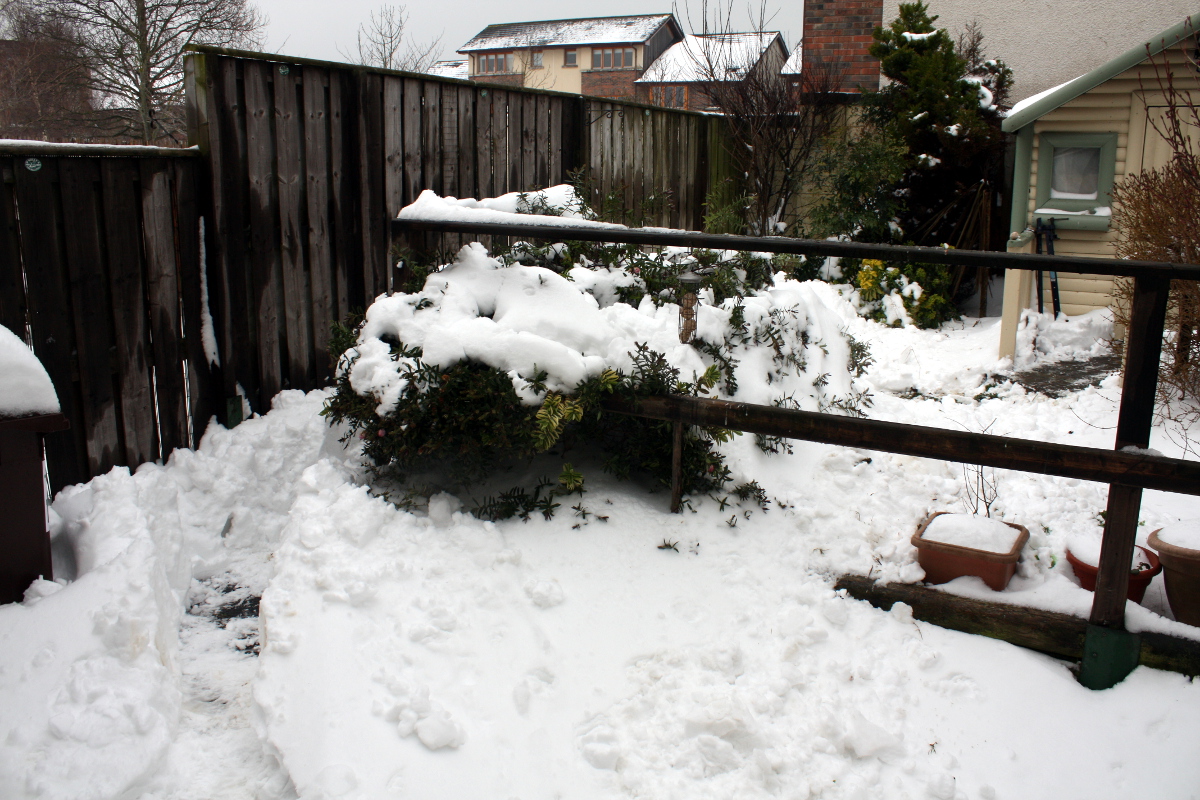
Jaysus. Okay, that sucked. I remember this from when I used to grow vegetables thirty years ago – every spring, you dig up the garden and it’s the only time you use the shovel a lot in the year so your muscles never get used to it. Ow. But!
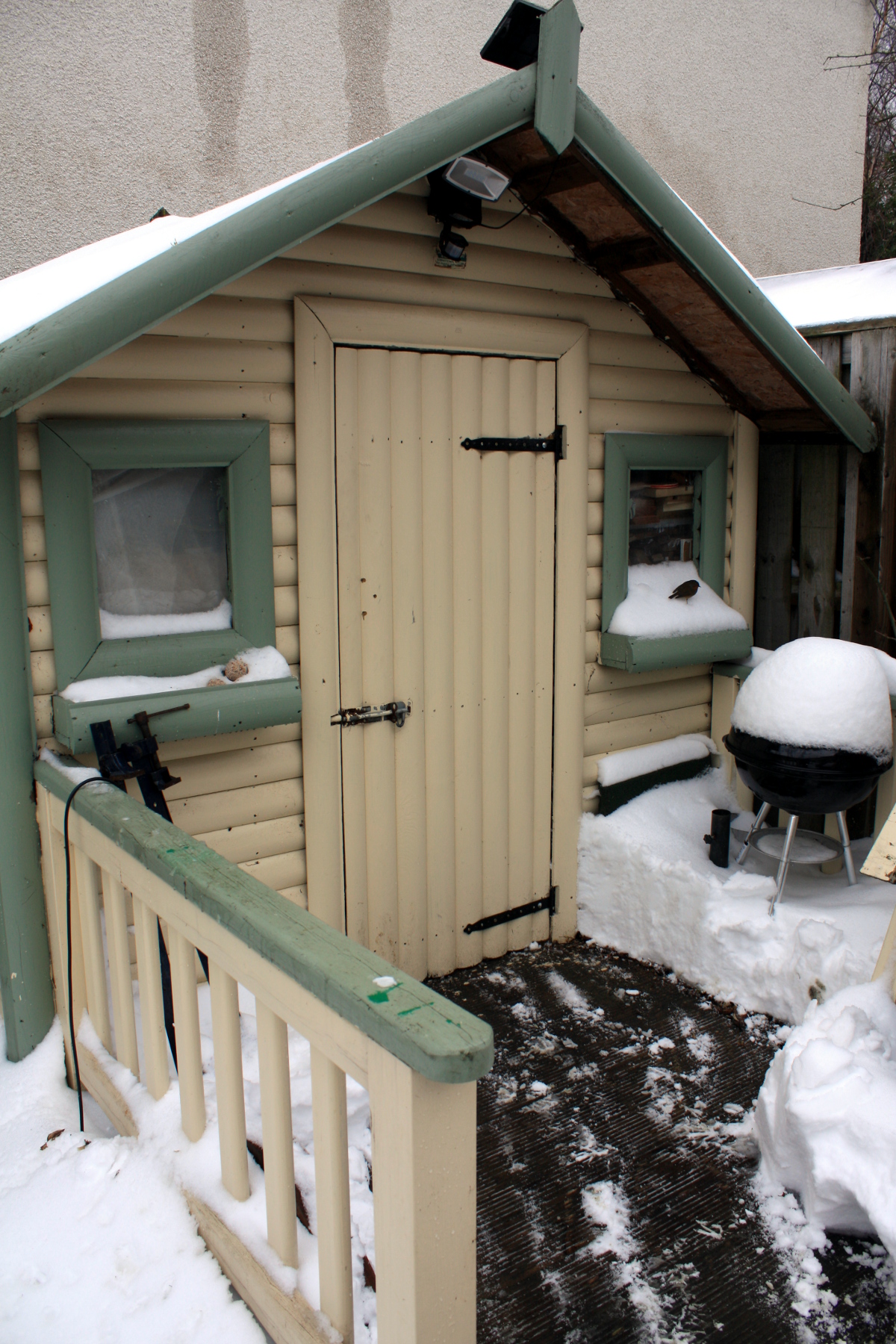
All clear. About 18″ of snow at the deepest point up against the wall (maybe three feet over in the corner on the far right out of frame). And no water damage inside, happily.
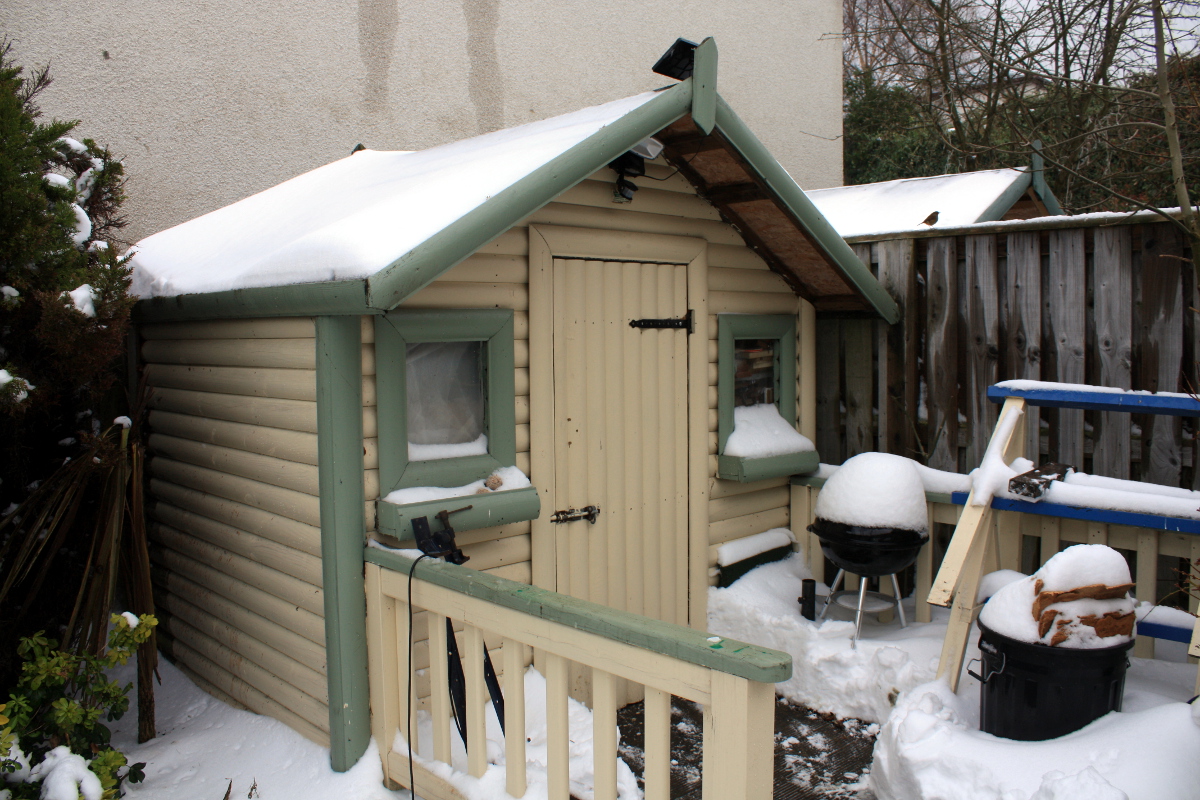 Even the robin’s looking happier now.
Even the robin’s looking happier now.
2.2C in the shed today. Might give it another day or so before going back out there again. Cold fingers and edged tools are a bad mix… plus I need to leave the kitchen door open for the power to the shed, and that’s divorce territory you’re talking in this weather.
